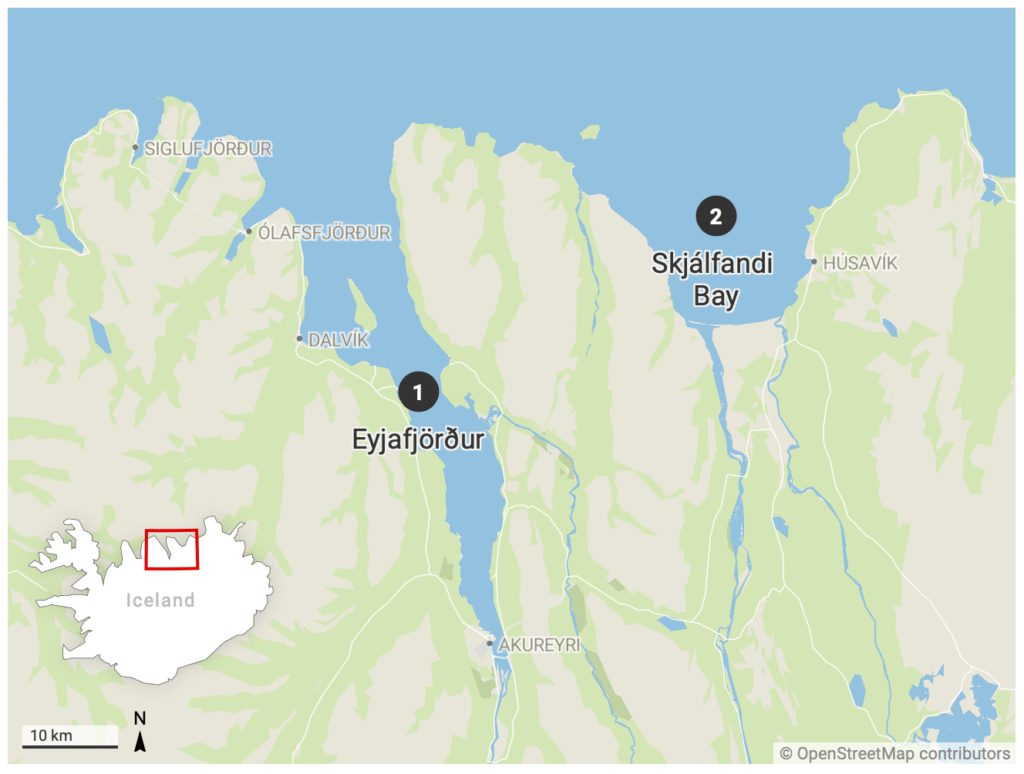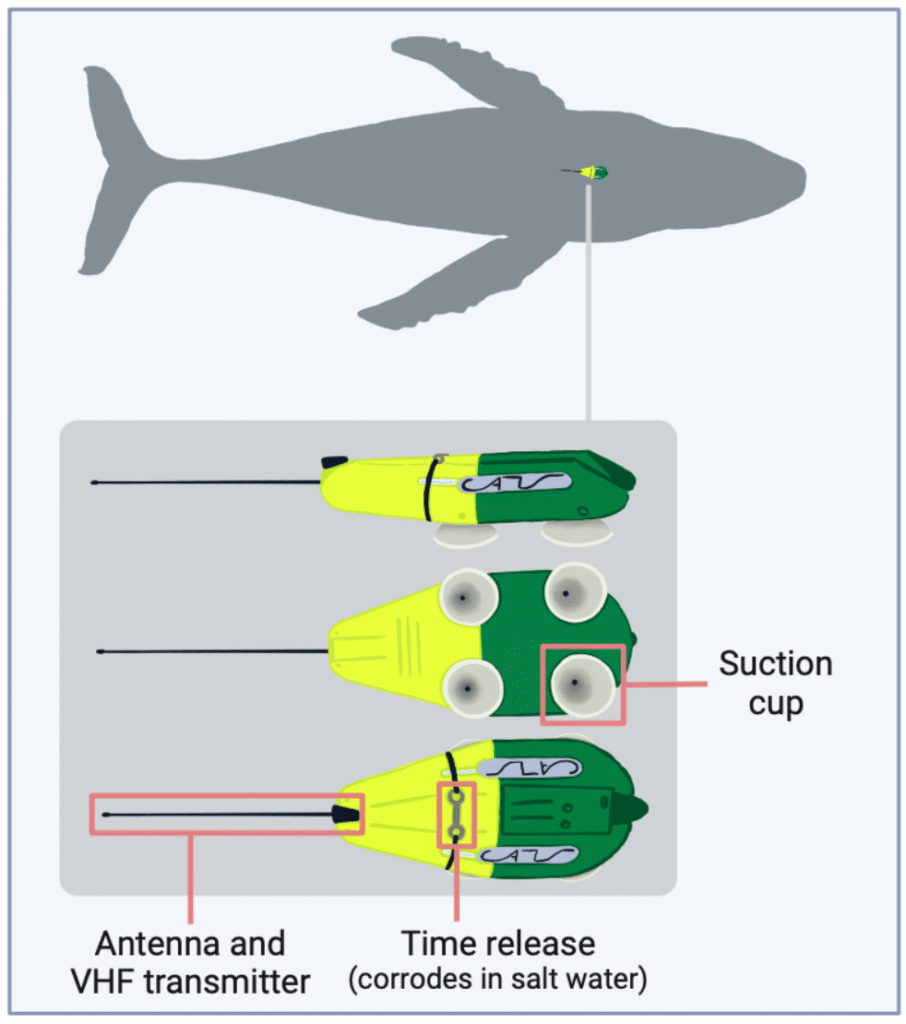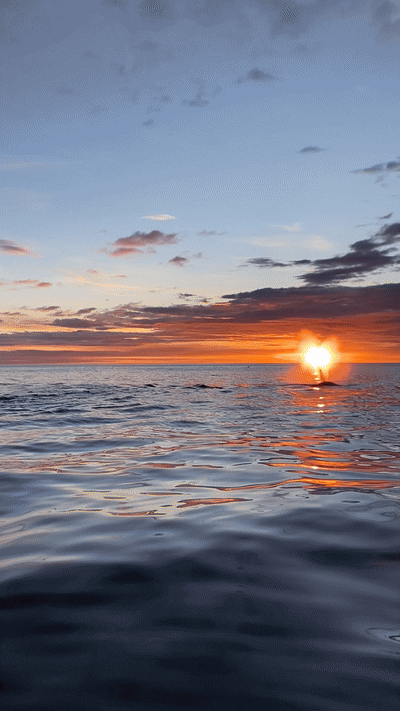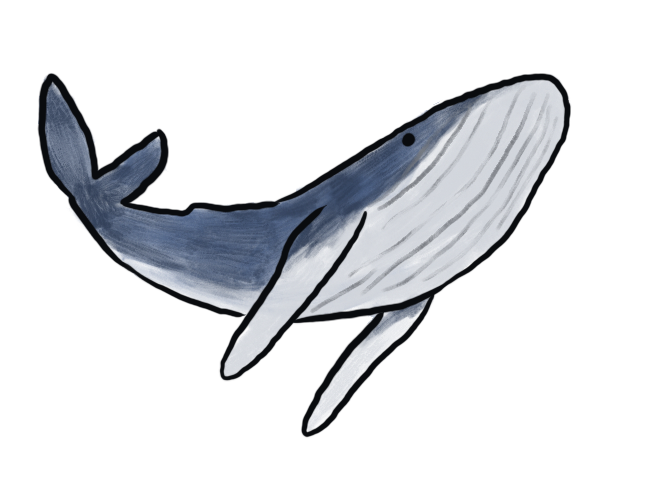
Study area
Two humpback whales were tagged. The first set of data was collected from a tag deployed in Eyjafjörður off Akureyri on the 30th of April 2024, while the second set of data was collected from a tag deployed in Skjálfandi Bay off Húsavík starting on the 26th of June.
Tag deployment
The whale was approached at a 45-degree angle using a Zodiac inflatable boat to ensure parallel positioning and enable a quick retreat if needed. An 8-meter pole was used to deploy the suction-cup tag between the blowhole and dorsal fin when the whale surfaced to breathe. The tag was equipped with a time-burned wire that corrodes in salt water, causing the tag to detach after about 12 hours. Once floating, the tag emitted a VHF signal to be retrieved.


Characterisation of tag data
The data were processed using Igor Pro 64 and following the methods employed by Iwata et al. (2021; 2024).
A dive was defined as being ≥ 10 seconds and > 3 meters. For each dive, data on duration, depth, post-dive surface time, number of lunge feeding events, and fluke stroke rate were extracted.
Using dive depth and fluke stroke rate, dives were categorized into four types:
- Feeding: presence of at least 1 feeding event
- Resting: Shallow depth (between 3 and 20 m), slow fluke stroke rate (≤ 2 strokes min-1)
- Shallow active: Shallow depth (between 3 and 20 m), higher fluke stroke rate (> 2 strokes min-1)
- Transit: Deeper dives (> 20 m), regardless stroke rate
Surface resting was defined as surface time (depth <3 m) between consecutive resting dives or as surface periods exceeding the average duration between resting dives.
References

Iwata, T., Aoki, K., Miller, P. J. O., Biuw, M., Williamson, M. J., & Sato, K. (2024). Non‐lunge feeding behaviour of humpback whales associated with fishing boats in Norway. Ethology, 130(2), e13419.
Iwata, T., Biuw, M., Aoki, K., Miller, P. J. O., & Sato, K. (2021). Using an omnidirectional video logger to observe the underwater life of marine animals: Humpback whale resting behaviour. Behavioural Processes, 186, 104369.